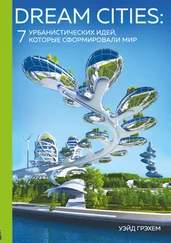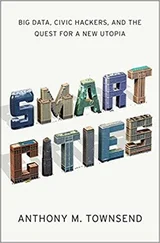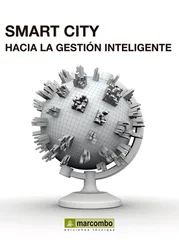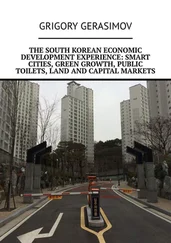Cyberphysical Smart Cities Infrastructures
Здесь есть возможность читать онлайн «Cyberphysical Smart Cities Infrastructures» — ознакомительный отрывок электронной книги совершенно бесплатно, а после прочтения отрывка купить полную версию. В некоторых случаях можно слушать аудио, скачать через торрент в формате fb2 и присутствует краткое содержание. Жанр: unrecognised, на английском языке. Описание произведения, (предисловие) а так же отзывы посетителей доступны на портале библиотеки ЛибКат.
- Название:Cyberphysical Smart Cities Infrastructures
- Автор:
- Жанр:
- Год:неизвестен
- ISBN:нет данных
- Рейтинг книги:4 / 5. Голосов: 1
-
Избранное:Добавить в избранное
- Отзывы:
-
Ваша оценка:
- 80
- 1
- 2
- 3
- 4
- 5
Cyberphysical Smart Cities Infrastructures: краткое содержание, описание и аннотация
Предлагаем к чтению аннотацию, описание, краткое содержание или предисловие (зависит от того, что написал сам автор книги «Cyberphysical Smart Cities Infrastructures»). Если вы не нашли необходимую информацию о книге — напишите в комментариях, мы постараемся отыскать её.
Cyberphysical Smart Cities Infrastructures: Optimal Operation and Intelligent Decision Making,
Cyberphysical Smart Cities Infrastructures
Cyberphysical Smart Cities Infrastructures — читать онлайн ознакомительный отрывок
Ниже представлен текст книги, разбитый по страницам. Система сохранения места последней прочитанной страницы, позволяет с удобством читать онлайн бесплатно книгу «Cyberphysical Smart Cities Infrastructures», без необходимости каждый раз заново искать на чём Вы остановились. Поставьте закладку, и сможете в любой момент перейти на страницу, на которой закончили чтение.
Интервал:
Закладка:
2.3.2 Data Analysis
The smart cities promises lead us to an ample proliferation and generation in data from all aspects of the domains and branches. Therefore, such huge amounts of data are at the core of the services generated by the IoT technologies [29]. This section of the framework, data analysis, is imperative because its results lead us to make proper decisions. If this process is not accomplished, the decision made will not be efficient. Thus, a large number of research studies have enhanced the process and yielded better results. In the early era of smart cities, there were only limited data generated every day due to the lack of sensors. Therefore, typical machine learning algorithms were sufficient for data analysis to make a model that can handle the situation and provide enough information to make a decision. However, thanks to technologies, the number of sensors and IoT objects have proliferated, and thus we have huge amounts of data that require big data algorithms like and Hadoop to handle the data [30].
Additionally, due to the huge quantity of data, researchers used DL algorithms especially transfer learning and meta‐learning [7] and some other famous machine learning techniques to learn within reinforcement learning like Q‐learning 31–33 for generating smart systems [34, 35].
2.3.2.1 Big Data Algorithms and Challenges
Due to the big data revolution, the enormous volume of high‐performance computations are unavoidable in such smart cities. Thus, big data algorithms are getting one of the important functioning pieces of smart cities.
 Transportation System:Transportation systems are generated using advanced technologies where applications of big data vary and are important [36]. Scenarios are established in the research studies to offer the following options to smart people: suggesting the best travel time for any given trip, providing real‐time traffic information, predicting movement patterns according to personality (daily routing path) or spatiotemporal routines, enhancing crash analysis, planning bus routes, improving taxi dispatch, and optimizing traffic time during big occasions [36]. For example, Zhu et al. [37] developed an approach to use two algorithms: Bayesian inference and Random forest to execute in real time to predict the probability of crash occurrence to decrease crash risks in smart cities. Moreover, researchers [38] have established a combination of supervised and regression algorithms, such as multivariate adaptive regression splines, regression trees, and logistic regression, to study motor vehicle accident injury behavior.
Transportation System:Transportation systems are generated using advanced technologies where applications of big data vary and are important [36]. Scenarios are established in the research studies to offer the following options to smart people: suggesting the best travel time for any given trip, providing real‐time traffic information, predicting movement patterns according to personality (daily routing path) or spatiotemporal routines, enhancing crash analysis, planning bus routes, improving taxi dispatch, and optimizing traffic time during big occasions [36]. For example, Zhu et al. [37] developed an approach to use two algorithms: Bayesian inference and Random forest to execute in real time to predict the probability of crash occurrence to decrease crash risks in smart cities. Moreover, researchers [38] have established a combination of supervised and regression algorithms, such as multivariate adaptive regression splines, regression trees, and logistic regression, to study motor vehicle accident injury behavior.
 Urban Governance: Learning from human mobility patterns discloses the movement and trend of a large population, the most popular applications of which are in domains like crime prediction [36], disaster evacuation, big events management, and safety estimation. To that end, knowledge about big events derived from bus trajectories, including event start time and end time, can be beneficial for the event planning and management department [39].
Urban Governance: Learning from human mobility patterns discloses the movement and trend of a large population, the most popular applications of which are in domains like crime prediction [36], disaster evacuation, big events management, and safety estimation. To that end, knowledge about big events derived from bus trajectories, including event start time and end time, can be beneficial for the event planning and management department [39].
2.3.2.2 Machine Learning Process and Challenges
The learning process based on given input where data are not sufficient does not produce reliable and robust results [7]. Machine learning algorithms get stuck in local minimum or maximum easily due to a large amount of data that leads to a problem called overfitting [7]. Furthermore, machine learning algorithms fail to learn positions and states (classes) when the number occurrence in the data is far less than others. For instance, within the smart healthcare domain, when capturing data, the probability of having all desired classes looks low, and the number of rare diseases would be insufficient for learning.
 Solutions:In a study [40], researchers established an approach called MetaSense, i.e. learn to sense rather than sense to learn. This approach took advantage of one of the important data analytic promises called zero‐shot learning (ZSL) [7, 41]. There are many applications of ZSL in computer vision [42] and motion detection in healthcare application [43] Furthermore, researchers in [44] proposed a solution based on ZSL called Zero‐virus providing a deep understanding for an intelligent transportation system to generate the best route for drivers. Zero‐virus does not need any vehicle‐tracklet annotation; thus it is the most volatile real‐world traffic scheme.
Solutions:In a study [40], researchers established an approach called MetaSense, i.e. learn to sense rather than sense to learn. This approach took advantage of one of the important data analytic promises called zero‐shot learning (ZSL) [7, 41]. There are many applications of ZSL in computer vision [42] and motion detection in healthcare application [43] Furthermore, researchers in [44] proposed a solution based on ZSL called Zero‐virus providing a deep understanding for an intelligent transportation system to generate the best route for drivers. Zero‐virus does not need any vehicle‐tracklet annotation; thus it is the most volatile real‐world traffic scheme.
 Machine Learning Statistic Records:Iskandaryan et al. [6] investigated a survey to study sensor data and analyze the impact of air quality in smart cities using supervised machine learning algorithms. They established four important and popular categories of algorithms associated with the number of research studies: first, the most popular ML algorithm, neural network (NN); second, logistic regression; third, ensemble algorithm; others. Furthermore, the results in [6] demonstrated that the number of publications associated with machine learning algorithms with the application of smart cities, particularly smart environment by predicting and preventing the air pollution risks, has increased progressively. Additionally, researchers in [6] evaluated the number of metrics that have been used in publications to examine the performance of each algorithm. The two most popular metrics are root mean square error (RMSE) and mean absolute error (MAE).
Machine Learning Statistic Records:Iskandaryan et al. [6] investigated a survey to study sensor data and analyze the impact of air quality in smart cities using supervised machine learning algorithms. They established four important and popular categories of algorithms associated with the number of research studies: first, the most popular ML algorithm, neural network (NN); second, logistic regression; third, ensemble algorithm; others. Furthermore, the results in [6] demonstrated that the number of publications associated with machine learning algorithms with the application of smart cities, particularly smart environment by predicting and preventing the air pollution risks, has increased progressively. Additionally, researchers in [6] evaluated the number of metrics that have been used in publications to examine the performance of each algorithm. The two most popular metrics are root mean square error (RMSE) and mean absolute error (MAE).
2.3.2.3 Deep Learning Process and Challenges
Feasible smart cities are established by technology‐driven foundations, and their initiatives are on different branches and domains, in which each of them may requires systems with high‐performance computing resources and technologies. Such systems have pros and cons such as saving energy and reducing the air pollution and reducing diagnose time, but writing something bad. One of the most popular technologies used to tackle such huge amounts of data is DL that is a special algorithm within machine learning and is efficiently used to obtain required knowledge from the input data, extracting the patterns that govern the whole data and also classify them. Several research studies are successfully applying DL on smart cities [24], such as urban modeling for smart cities, intelligent infrastructure for smart cities, and smart urban governance. Here, we aim to focus on a particular application of DL that is smart mobility and transportation.
AI definitely pushed all the science a step forward by making the systems and processes of scientific inquiry as smart as possible, for example, autonomous transportation systems [24] in smart mobility. Making a decision about whether the object seen is a human being or not is challenging [45]. Object detection is one of the challenging issues in smart mobility that surely boosts and facilitates automation in transportation systems. Consequently, this positively enhances and improves smart mobility in smart cities. Researchers in [45] explored analysis of decent object detection solutions like DL [46]. The scientists leveraged a well‐known object detection system, namely, YOLO (You Only Look Once), which was developed earlier by Redmon et al. [47] and assessed its performance on real‐time data.
2.3.2.4 Learning Process and Emerging New Type of Data Problems
Интервал:
Закладка:
Похожие книги на «Cyberphysical Smart Cities Infrastructures»
Представляем Вашему вниманию похожие книги на «Cyberphysical Smart Cities Infrastructures» списком для выбора. Мы отобрали схожую по названию и смыслу литературу в надежде предоставить читателям больше вариантов отыскать новые, интересные, ещё непрочитанные произведения.
Обсуждение, отзывы о книге «Cyberphysical Smart Cities Infrastructures» и просто собственные мнения читателей. Оставьте ваши комментарии, напишите, что Вы думаете о произведении, его смысле или главных героях. Укажите что конкретно понравилось, а что нет, и почему Вы так считаете.
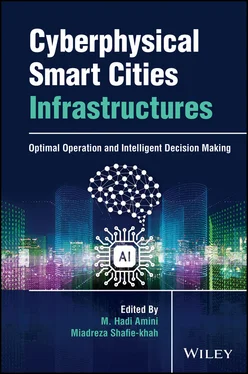
![Чарльз Диккенс - A Tale of Two Cities [С англо-русским словарем]](/books/26616/charlz-dikkens-a-tale-of-two-cities-s-anglo-thumb.webp)
